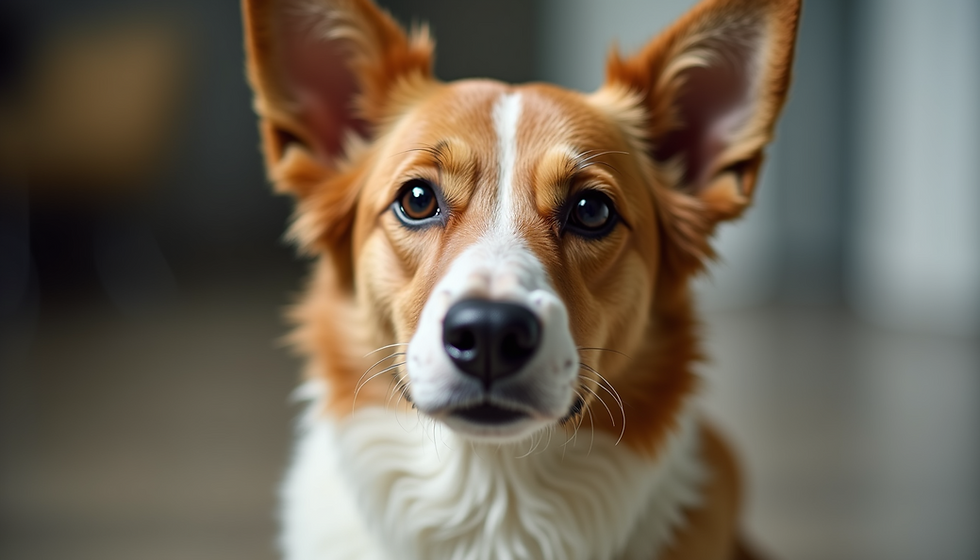How to Avoid Common Dog Training Mistakes and Transform Your Pup into a Superstar
- Bradford Dean
- Aug 19
- 5 min read
Updated: Sep 10
Training your dog can be one of the most rewarding experiences, but it often comes with its own set of challenges. Many pet parents unknowingly make mistakes that can hold back their dog's learning potential. Here, we will explore common dog training mistakes and provide you with effective tips as suggested by SMP Dog Trainer to help transform your pup into a true superstar!
Understanding the Importance of Consistency
One of the most significant mistakes dog owners make is inconsistency in training. Dogs thrive on routine and clear expectations. If commands and rules constantly change, it can confuse your furry friend.
Establish a consistent set of commands and stick to them. For example, if you use the command "Sit," ensure everyone in the household uses it consistently. Dogs can learn up to 165 words and commands when there is clarity. Inconsistency can derail their understanding and lead to frustration on both sides.
Skipping Socialization
Another critical mistake is neglecting socialization. Many pet parents focus solely on obedience training and forget that socialization is equally essential. A well-socialized dog is more confident and less likely to develop behavioral problems. Indeed, studies show that properly socialized puppies are 85% less likely to show aggression in unfamiliar situations.
To improve your dog's social skills, expose them to various environments, people, and other animals. Consider enrolling in puppy classes, frequenting dog parks, or organizing playdates with other friendly dogs. These experiences help your dog adapt to new situations and build their confidence.
Overusing Treats
While treats can be a powerful motivator, relying on them too heavily can result in issues. If your dog only obeys commands when treats are present, they may not learn to respond without them. Research indicates that dogs taught with occasional reinforcement can retain commands longer—up to 75% longer than those trained with constant treats.
To address this, start reducing treat usage gradually. Instead of offering a treat every time, mix in praise and affection. For instance, after a few successful "Sits," reward them with verbal praise like "Good boy!" or a gentle pat, helping them learn to respond without always seeking food rewards.
Ignoring the Power of Timing
Timing is crucial in dog training. Many pet parents fail to reward or correct their dogs at the right moment, leading to confusion. Studies show that timely rewards can enhance learning effectiveness by up to 50%. If you wait too long to reward a good behavior, your dog may not connect the action with the reward.
Focus on immediate reinforcement. For instance, if your dog successfully performs a command, reward them right then. This practice reinforces the behavior and helps them clearly understand what action resulted in the reward.
Lack of Patience
Training a dog requires time and patience. It is common for pet parents to become frustrated when their dogs don’t learn quickly. This frustration can lead to negative interactions, which set back training progress. In fact, studies indicate that dogs trained with positive reinforcement show improvements over 60% more than those trained with negative methods.
Cultivate patience by reminding yourself that each dog learns at their own pace. Celebrate small victories—like your dog mastering a basic command after a week of practice. If you find yourself becoming frustrated, take a step back. A short break can be beneficial for both you and your pup.
Failing to Set Realistic Goals
Setting unrealistic expectations can lead to disappointment. Many pet parents want their dogs to master complex commands too quickly, which can hinder progress. Research shows that dogs only learn effectively with clear, incremental goals.
To avoid this mistake, set achievable goals for your dog's training. Start with one command at a time. Break down larger tasks into manageable steps—for example, teach "Sit" before moving to "Stay." Celebrate milestones, however small, to keep motivation high for both you and your dog.
Neglecting to Train in Different Environments
Training in a controlled setting, like your home, is essential, but it’s just as important to practice in various locations. Dogs may behave differently in new environments, and failing to train in different settings can lead to issues when you’re out.
Include outdoor settings in your training sessions. Take your pup to the park or a friend's house to work on commands. This exposure will help your dog learn to respond reliably, regardless of distractions around them.
Not Understanding Your Dog’s Body Language
Many pet parents overlook the importance of canine body language. Dogs communicate through their posture, tail position, and facial expressions. Ignoring these signals can lead to misunderstandings and ineffective training. Studies show that recognizing a dog's body language can increase training
effectiveness by 30%.

Learn to recognize signs of stress or excitement. For example, if your dog's tail is tucked and ears are back, they may feel anxious. Adjust your training approach accordingly—like giving your dog a moment to relax before continuing the session.
The Role of Environment in Dog Training
The environment plays a crucial role in your dog's training. Dogs are sensitive to their surroundings, and distractions can significantly impact their ability to learn. Training in a quiet, familiar space is a good start, but gradually introducing new environments is essential.
Training in Public Spaces
Taking your dog to public spaces can be beneficial. Parks, sidewalks, and busy streets provide a wealth of distractions. Start with short training sessions in these areas. Gradually increase the duration as your dog becomes more comfortable. This practice will help them learn to focus on you, even when surrounded by distractions.
Home Training vs. Outside Training
While training at home is vital, outside training offers unique challenges. Dogs may encounter other animals, people, and sounds that can distract them. By practicing commands in these environments, you teach your dog to listen and respond, no matter the situation.
Creating a Safe Training Environment
Ensure that the training environment is safe. Remove potential hazards that could distract or harm your dog. Use a leash or harness to keep your dog secure, especially in unfamiliar areas. This way, you can focus on training without worrying about their safety.
Final Thoughts on Training Your Dog
Training your dog is a journey filled with ups and downs, but by avoiding these common mistakes, you can set your pup up for success. Remember to be consistent, patient, and attuned to your dog's needs. With the right training tips and a positive outlook, you can transform your furry friend into a well-behaved superstar!
Embrace the process, celebrate the small victories, and enjoy the bond you’re building with your dog. Happy training!

$50
Product Title
Product Details goes here with the simple product description and more information can be seen by clicking the see more button. Product Details goes here with the simple product description and more information can be seen by clicking the see more button

$50
Product Title
Product Details goes here with the simple product description and more information can be seen by clicking the see more button. Product Details goes here with the simple product description and more information can be seen by clicking the see more button.

$50
Product Title
Product Details goes here with the simple product description and more information can be seen by clicking the see more button. Product Details goes here with the simple product description and more information can be seen by clicking the see more button.




Comments